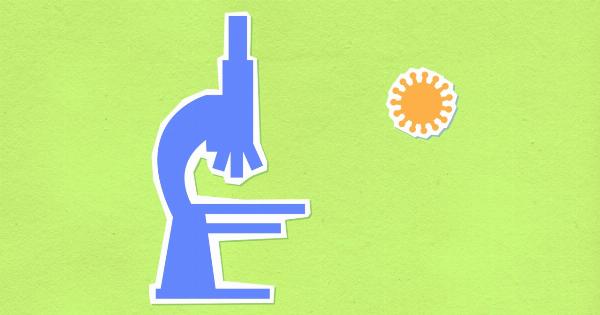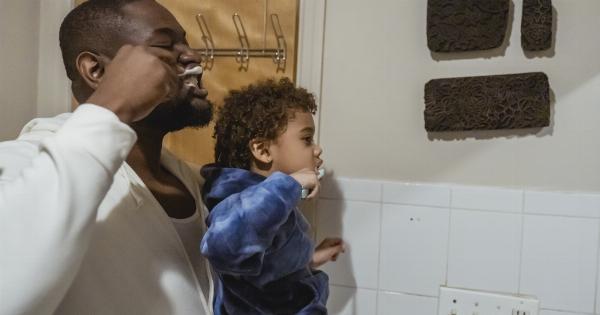When two people lock lips, a seemingly innocent act takes place that establishes an intimate connection between them. However, beneath the surface of this romantic gesture lies a potential exchange of millions of microbes.
Yes, you read that right – a simple kiss can transmit a significant number of germs from one person to another, ranging from harmless bacteria to potential pathogens. In this article, we will explore the fascinating world of microorganisms hitching a ride through kisses and uncover just how many microbes are commonly transmitted during this intimate act.
What Lies in a Kiss?
A kiss involves the delicate exchange of saliva, which contains a diverse array of microorganisms. Our mouths serve as a cozy home to numerous bacteria, viruses, and fungi, forming what scientists refer to as the oral microbiome.
This complex ecosystem consists of hundreds of different species that coexist in a mostly harmonious relationship with our bodies. However, when we lock lips with another person, we inadvertently share these microorganisms.
Quantity vs. Quality
While it may be unsettling to think about exchanging millions of microbes with each kiss, it’s essential to understand two crucial factors: quantity and quality.
The quantity refers to how many microorganisms are transferred, while quality focuses on the types of microorganisms and their potential impact on our health.
Research suggests that the average 10-second kiss can transfer anywhere between 80 million to over 1 billion bacteria.
A study conducted at the Netherlands Organisation for Applied Scientific Research (TNO) found that couples who kissed nine times a day shared an astonishing 80 million bacteria per kiss, while those who kissed less frequently shared around 1 million bacteria per kiss. These numbers may seem staggering, but it’s important to note that the majority of these microorganisms are harmless and actually contribute to our overall well-being.
Beneficial Microbial Flora
Not all microbes are bad for us – many are beneficial and play essential roles in our bodies. The oral microbiome, for instance, helps break down food particles, maintains oral hygiene, and even aids in the natural defense against harmful pathogens.
These beneficial microbes are often shared through a kiss and can even help establish a stronger immune system within an individual.
But what about the potential pathogens, you ask? While it is true that some disease-causing microorganisms can be transmitted through kissing, the risk of infection is generally low.
For diseases like the common cold, the flu, or even mononucleosis (also known as the kissing disease), the transfer of pathogens mainly occurs in close, prolonged contact rather than through a mere kiss. Additionally, many of these diseases require higher concentrations of the pathogen to cause infection, which may not be commonly found in saliva during a usual kiss.
Changing Microbial Landscape
Although a significant number of microbes are shared during a kiss, our bodies have the ability to rapidly adapt and handle these changes.
In fact, studies have shown that the oral microbiome of couples who frequently kiss becomes more similar over time. This phenomenon, known as microbial exchange, indicates that our bodies naturally adjust to accommodate and build immunity against the transferred microorganisms.
Kiss with Caution
While it’s reassuring to know that the majority of microorganisms shared during a kiss are harmless or even beneficial, it is still important to exercise caution.
Certain conditions or situations can increase the risk of transmitting potentially harmful pathogens through a kiss. These include:.
1. Active Infections
If one person has an active infection such as a cold sore caused by the herpes simplex virus, it is best to abstain from kissing until the infection has healed. This reduces the risk of transmitting the virus to the other person.
Similarly, mouth or throat infections, such as strep throat, should also be avoided to prevent transmission.
2. Poor Oral Hygiene
Inadequate oral hygiene can contribute to an imbalance in the oral microbiome, increasing the likelihood of harmful microorganisms being present.
Maintaining proper oral hygiene, which includes regular brushing, flossing, and dental check-ups, helps minimize this risk.
3. Blood-Borne Diseases
It is crucial to avoid engaging in deep kissing or passionate kissing if one or both partners have blood-borne diseases such as hepatitis B or C.
While the risk of transmission is generally low, it is safer to take precautions to prevent the potential exchange of blood through open sores or wounds in the mouth.
4. Personal Hygiene Practices
Personal hygiene practices, such as handwashing, can also contribute to reducing the transmission of microbes.
Regularly washing hands before engaging in any intimate activity, including kissing, can help minimize the risk of transmitting potential pathogens.
Conclusion
A kiss, though seemingly innocuous, can transmit a myriad of microorganisms from one person to another.
The exchange of millions of bacteria, viruses, and fungi during a romantic moment may sound disconcerting, but it is important to remember that the majority of these microbes are harmless or even beneficial. Our bodies have evolved to handle such microbial exchanges and, in fact, can even strengthen our immune systems.
So, the next time you lock lips with your loved one, remember that a germ-ridden kiss might just be a sign of a healthy and thriving relationship.























